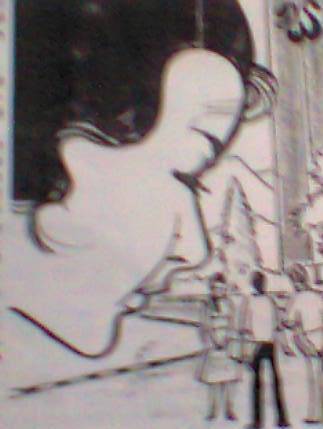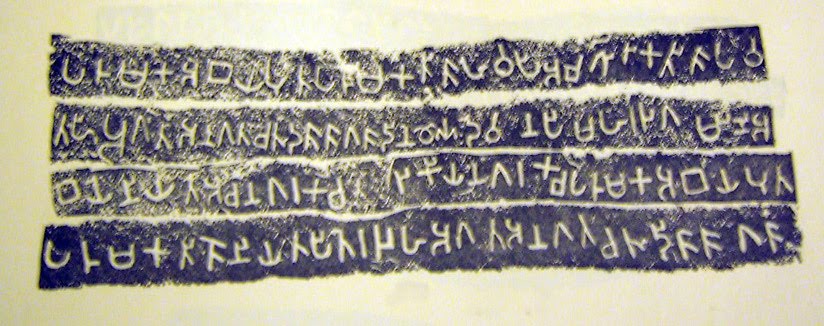'Thoughts' are not always milky white or off white or pure white. Some thoughts are colourless. Some thoughts are coloured with something picked or chosen from somewhere or elsewhere. You cannot predict about thoughts. i find no white adults and i have not met any white adults all these years of my living. 'White' has various and different meaning , i am sure you all know that very well. i am not talking about the 'whites' of the west or the blacks in the East. You may find white in black. The black in white. you get rangers of colours. you see them in fabric, thread or in what others talk or discuss.
i feel infants are pure white though they embrace various colours when they gradually become children, teen, youth, adults.
i do not know whether i should talk about colours today or about the white ( colour) in particular or else whether i should talk about MILK specifically.
Perhaps about 'cattle farming' then milk becomes a definite topic, automatically
i think in any agricultural community 'cattle farming' earns or has a very special , important place.
i know that agricultural farmer is different to other farmers, if you think of the categories. fisheries is something totally different from cattle farming or other agricultural activities. i am specifically thinking of 'prawn farming' that brings the farmer a good money. specific topic to discuss yet such thoughts are very coastal not very inland or highland. lets talk about coastal thoughts or about inland fisheries / activities on some other day.
i think, now you can talk about 'technological feeds' with regard to cattle farming rather than talking about 'traditional feeds. i do not know whether i should begin this essay methodically without really straight away talking about feeds for cattle
we know that cattle farming is as old as paddy cultivation. for agricultural activities such as 'land preparation activities, very before machinery revolutions begun, we used animals to complete various activities related to agriculture
People always like to do various or every possible experiment they can think of or testable in what ever they do. without knowing the subject i cannot say anything perfectly here, but something from what i heard or learned from farmers.
I am thinking of the 'traditional methods of agricultural farming' and the technologically improved farming strategies.
i know that it is good to talk about benefits and harmful things of both technological strategies or traditional methods with regard to the 'fertile - sustainability' of the lands and the 'quality of harvest', weight of harvest (total)
from seeds to harvest its a huge process and there are a lot that can be discussed. if i begin to talk about that my thoughts may become very 'grainy' so lets mute this discussion for few days until i collect some information about methods of farming / irrigated agriculture
we all know though we can think of similarities the nature of two farming shows differences as well.
The space ( the land), the capital, time investment, wage or family labour, waiting period until they get harvest.
what you earn from cattle farming is 'quicker', daily or monthly, something fixed (?) and not seasonal.
i didn't know that there is something called 'cattle feeds' other than 'punnakku' but i know about fertilizer and about pesticides also weedicides. knowledge is something very rocketry , you should stay in touch with every day updated knowledge otherwise what would happen is ' you become cageous or primitive. The world is faster than we can imagine. But we should only pick or choose what is relevant or useful, good for our living or earnings, people.
it is advisable that we should not stagnant in 'traditional methods of farming, very including in 'cattle farming' yet carefulness brings good results, if you think of the harvest, milk or otherwise
The total number of bushels they get from an acre or from a hectare depends on how you take care of your fields. From the traditional methods of cultivation of yester years to very technological methods of today, you can experience some difference' with regard to investments and harvest also profit earn.
i do not know whether what i heard is memorizable right now. In this season, the harvest they have gained from a hectare (?) is about 1.3 metric tons of paddy. I am not sure whether i can remember the right figures. i tried to memorize this figures / facts in numbers, from the time that i hear the news ,when traveling from Kandy to Kurunegala, couple of days after the New Year.
i believe that the Government have introduced 'fertilizer package' for a reasonable bearable price few years back (after 2005) for the Paddy Cultivators yet i guess there is no such programme introduced for the 'cattle farmers' , something lacking there.
So i like to suggest, if you think of 'all farmer's improvement' try to implement something for them as well.
Here are some facts i gathered , observed.
The Market Price for 'cattle feed of a particular trade name' ; each packet (25kg packet) is about 985/= (selling price, retail price). i am not sure about the whole sale price.
i do not know whether they can buy them in kilos, if they do not want an entire packet or if they cannot afford for a huge pack. i think number of packets or number of kilos they need depends on the number of cattle the farmer owns.
i do not know whether they should continue feeding with such feeds once they begin to give them. i do not know whether it is harmful if they suddenly stop giving them such feeds and continue with the old or traditional methods of feeding the cattle.
so for a big cattle farmer, the total number of rupees they should invest / spend a month for what ever necessary depends on such calculations as well. i think that the veterinary consultations/ advises, they get for free of charge but i am not aware whether they consult them private doctors / advisers as well.
i know that they need to invest some money initially to begin such employment activities to earn a living, a better profit. ( The capital)
For the Hut / shelter for cattle they need to invest some money, for the cattle ( depends on the kind /variety) for some types of cattle they have to pay 100, 000 rupees . for hygienic feed it is essential to have a better equipments and tools as well, such as feeding and milking buckets, containers with air tied lid to avoid bacterial issues.
Better refrigerating . storage facilities are also important
Most farmers use family labour, rarely wage labour ( depending on the size of the farm) no high labour costs compared to paddy cultivation
collecting and selling centers at village level is a significant feature of 'profit earning' of cattle farming
You find certain Milk collecting centers at village level that some small, medium or huge cattle farm owners have started.
some of the popular big companies come to village to collect 'milk' from the farmers and small farmers bring their harvest to these little or other collecting centers.
i think that there are government milk collecting centers part from these privately maintained centers that deals with private companies. I have no idea whether the two institutions pay them differently or the prices similar.
1 Liters of milk = Price?
i think when farmers does both paddy cultivation and cattle farming they can benefit from each activities, i.e. wastes such as cow dung, piduru can be used various ways as relevantly or appropriately.
Cow dung can be used for paddy cultivation, to improve the soil fertility, during mute period of paddy cultivation , until next season begins, brings good results.
Piduru can be used use as cattle feed ( traditional)
some grow Grass types suits for cattle,i know, but, some do not invest labour , or take no effort to grow such specifically but uses what they get from their own home garden.
so these two types of activities are mutually and cordially benefit from each other.
so i think though they need to invest more time or labour( daily) for cattle farming, compared to any other type of seasonal cultivation such as paddy, vegetable or chena cultivation its an independent fairly profitable , reasonable investment, earn a living
so i guess more government intervention is necessary and what ever began should continue without any hazard. New programmes if neccasry should begin appropriately to look after the cattle farmer.
i know compared to past the standards and the levels of improvements of the cattle farmer is satisfactory. i.e Prices
wish you all a milk white future








No comments:
Post a Comment